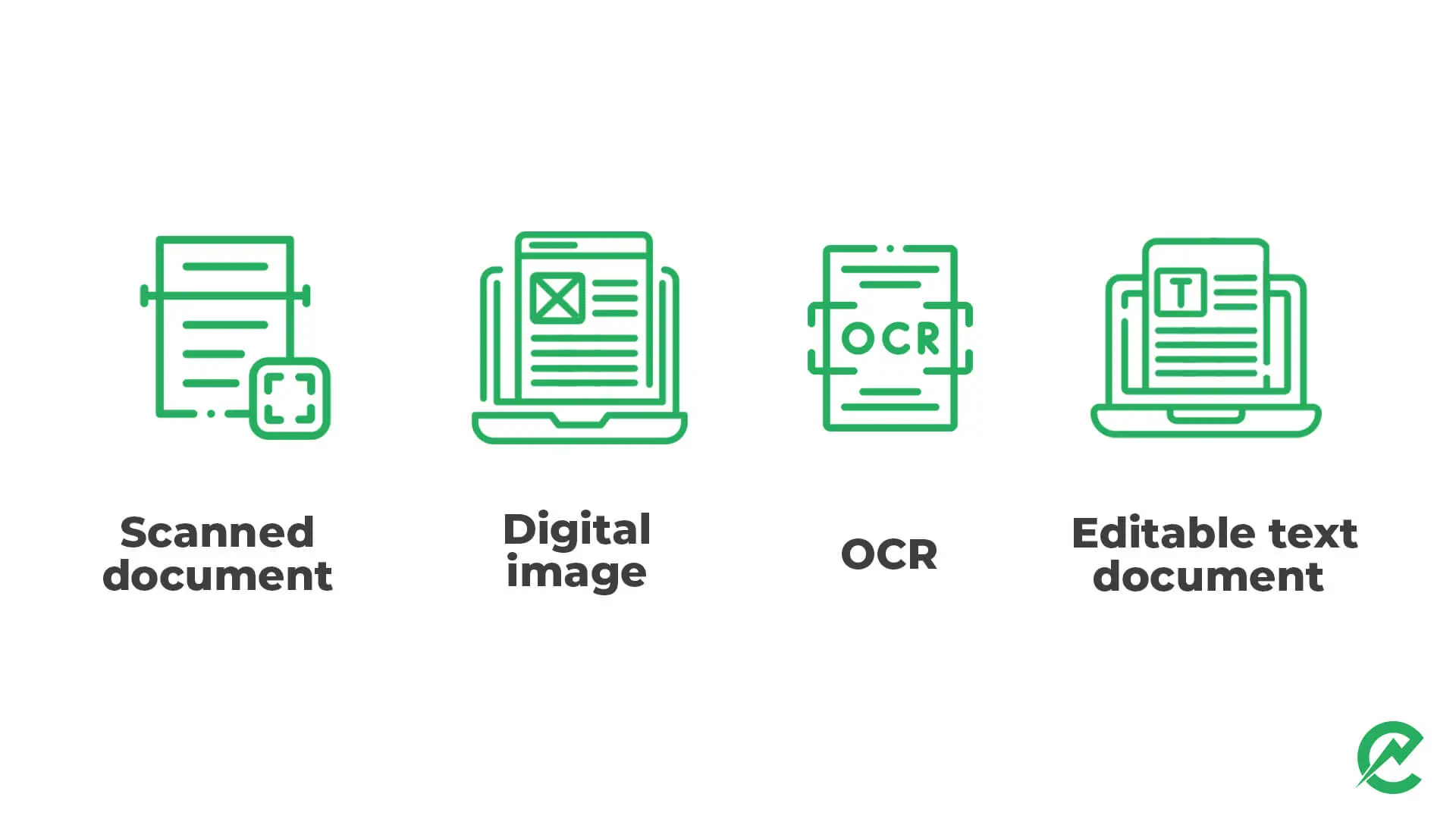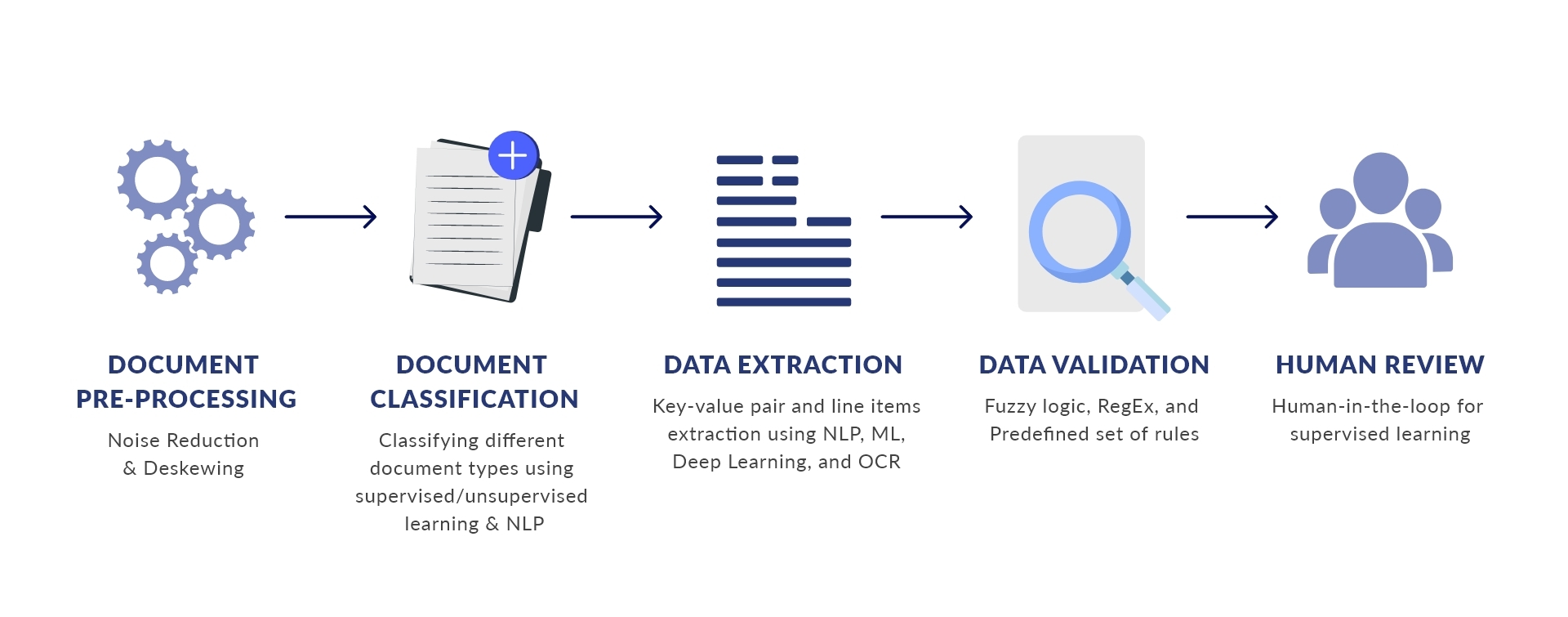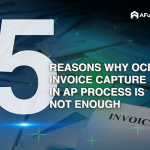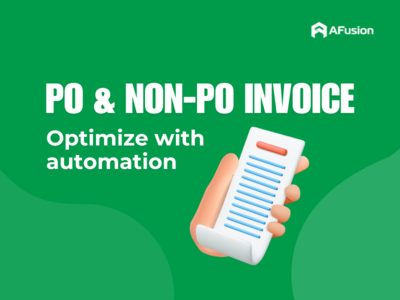Resources > Blog > 12> IDP vs OCR: Which Technology Should Businesses Choose?
IDP vs OCR: Which Technology Should Businesses Choose?
In the digital age, choosing the right technology to optimize your business processes is a real challenge. Intelligent Document Processing (IDP) and Optical Character Recognition (OCR) are two confusing terms that are often used interchangeably. However, there are two different technology solutions. So what are IDP vs OCR? What is the difference? Which technology should your business choose? Find out more in the article below.
What is Optical Character Recognition (OCR)?
OCR (Optical Character Recognition), or optical character recognition, is a technology that allows computers to “read” or scan text from images.
Simply put, OCR turns images containing text into editable text on a computer, converting documents from image format (such as JPG, PDF) to editable text format (such as DOCX, TXT).

Source: ElectroNeek
OCR works through a multi-step process. First, it scans the document or image containing text. Then, OCR recognizes and analyzes the shapes of characters in the image using intelligent algorithms. Once recognized, OCR compares the characters with a programmed database. Finally, after the processing is complete, OCR converts the extracted text data into a digital file for use.
Some common use cases of OCR:
- Personal identification: OCR can scan legal documents such as passports, ID cards, driver’s licenses, etc. and extract these data to store in the system.
- Data extraction: OCR allows scanning invoices, and receipts, processing accounting documents in PDF format and extracting information.
Some limitations of OCR:
- OCR only works with simple sample documents. OCR has difficulty recognizing text for poor quality images (blurry, noisy), handwritten documents or special characters and complex, multilingual languages.
- OCR is not capable of processing semi-structured and unstructured documents (such as complex tables, documents containing images combined with text).
- OCR does not understand the context of the text. This leads to a lack of contextual analysis and content understanding capabilities like more advanced AI technologies.
Examples of businesses using OCR:
Banks often use OCR to digitize documents such as customer records, invoices, and transaction receipts. When customers apply for an account or a loan, banks can scan the paper documents and use OCR to convert the information into a digital format. This saves time, reduces data entry errors, and improves customer service.
What is Intelligent Document Processing (IDP)?
Regarding the meaning of IDP technology, first of all, IDP stands for Intelligent Document Processing, which is a technology that automatically collects, extracts and organizes data from semi-structured and unstructured documents into structured data for use.

Source: Assets Global
The “smartness” in IDP intelligent document processing lies in the use of Artificial Intelligence (AI) tools to extract data. This AI tool includes: Optical Character Recognition (OCR), Computer Vision, Natural Language Processing (NLP), Machine Learning (ML) and Robotic Process Automation (RPA) to optimize recognition, classification, analysis, data extraction and data evaluation to improve accuracy and efficiency.
IDP is used to process large volumes of data:
- Automating financial document processing: IDP is used to automatically extract and process documents such as invoices, receipts, financial reports, helping to reduce manual data entry and improve accuracy in financial management.
- Manage and classify legal contracts: IDP helps to automatically analyze, classify and extract data from a series of contracts and legal documents. This helps businesses quickly process important documents and manage large volumes of data more effectively.
- Automatically process sales invoices, shipping documents or insurance documents in PDF format.
Benefits of IDP:
- Cost savings: by automating repetitive manual document processing processes. helps to reduce errors, save on personnel costs
- Efficient processes: Intelligent Document Processing (IDP) contributes to creating a consistent and seamless system. IDP can easily integrate with other systems, such as database systems or business intelligence tools for analysis and reporting.
- Enhanced Straight-Through Processing (STP)
- Improved Accuracy: Using intelligent algorithms to extract data, IDP detects errors and validates accurate information from a variety of documents.
Examples of businesses using IDP:
Insurance companies use IDP to process claims from customers. When a customer files a claim, the documents may include contracts, medical bills, and related documents. IDP automatically extracts the necessary information, classifies the documents, and performs semantic analysis to identify elements relevant to the claim. This not only reduces processing time, but also improves accuracy and reduces manual work for employees.
IDP vs OCR: The Basic Difference
Both IDP vs OCR are technologies used to process and extract data. However, they have the following fundamental differences:
OCR | IDP | |
|---|---|---|
Data type | Simple, structured, and template-based data. | Complex data, including unstructured and semi-structured data, template-free data. |
Capabilities | Data extraction | Analyze, classify, extract and evaluate data. |
Core technology | Combine software and hardware. | Machine Learning core technology integrates with AI technology solutions such as Computer Vision, NLP, and Deep Learning. |
Deployment infrastructure requirements | Complex infrastructure. | Cloud infrastructure. |
Accuracy | Less accurate than IDP. Depends on the image quality. OCR is a manual tool so errors are inevitable. | Accuracy up to 99%. IDP uses ML algorithms to understand documents, maximizing accuracy over time. |
Maturity level | Low. OCR can only perform the task of scanning and extracting data. | High. IDP has the ability to understand the contexts of complex data |
IDP vs OCR: Which One to Choose for Process Optimization
Data processing and management are extremely important in the current digital era. IDP vs OCR technologies are both powerful tools that help businesses automate document processing processes. However, which solution should businesses choose?
This answer depends on the specific needs of the business such as the type of documents to be processed, the complexity of the information, and the specific business goals of each business to choose between IDP vs OCR technology. To achieve optimal efficiency, determining the fit between technology and actual needs is essential, helping businesses optimize processes and improve productivity.
OCR has been the most widely used tool at an average cost for a long time to digitize documents and convert images into text. It is very effective for simple, well-structured text conversion tasks with less information and pages. Meanwhile, IDP (Intelligent Document Processing) is a more advanced solution that offers more functionality. IDP combines OCR with AI technologies. It is ideal for more complex content analysis requirements and automation of complex workflows. This helps businesses process large volumes of complex data more efficiently, reduce errors, and enhance content analysis capabilities.
In short, you can make a decision based on the following scenarios:
- OCR: Suitable when only needing to extract text from documents, processing simple documents with clear structure.
- IDP: A better choice when needing to process large volumes of complex documents, requiring comprehensive automation, semantic analysis, and semi/unstructured data.
Conclusion
Both IDP vs OCR are powerful technologies that help optimize document processing processes. Each technology will be suitable for different businesses. To achieve optimal efficiency, determining the suitability between technology and actual needs is essential, helping businesses optimize processes and improve productivity.
If you are looking for a complete solution to help your company process large volumes of unstructured documents. AFusion will be an option for you – a business that provides comprehensive process optimization IDP solutions.
Our experts are always ready to support you!



 Previous Post
Previous Post Next Post
Next Post


